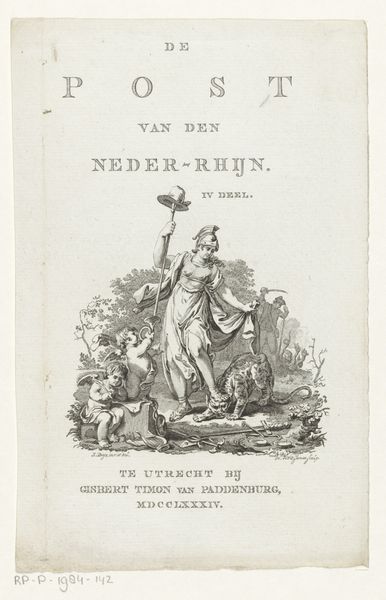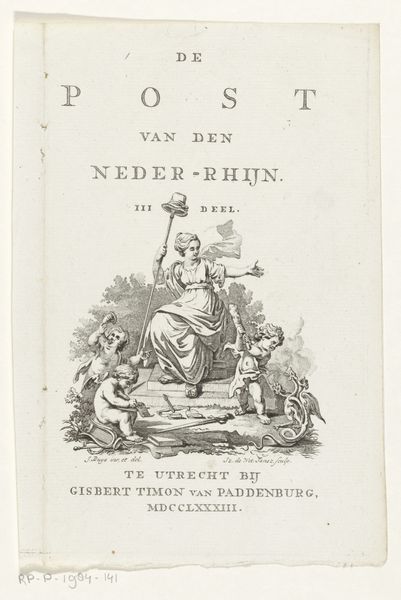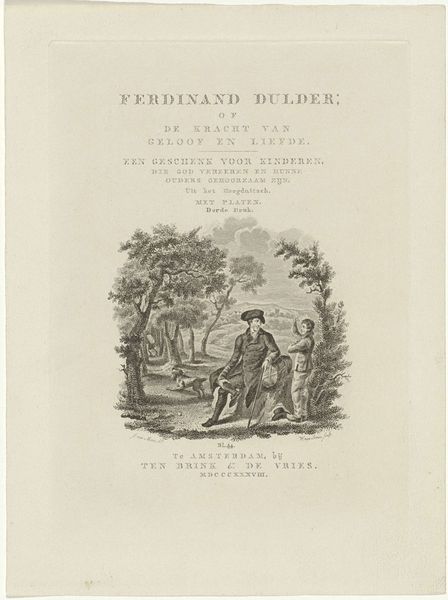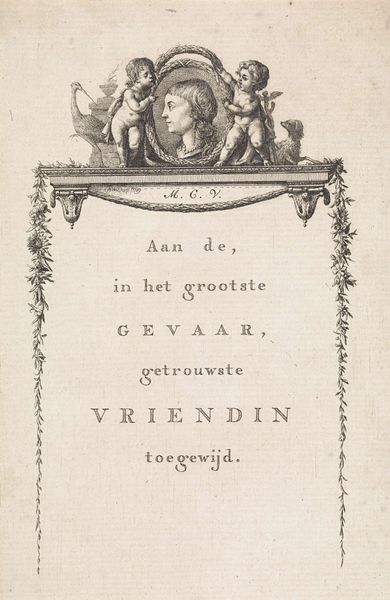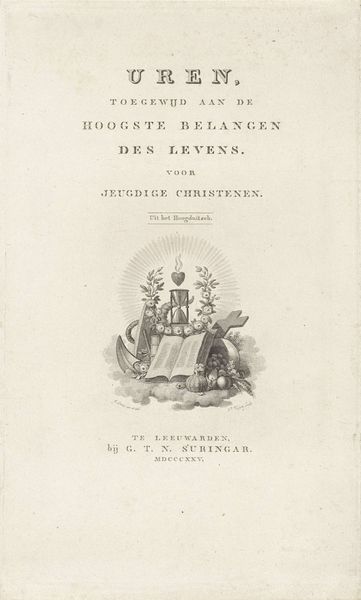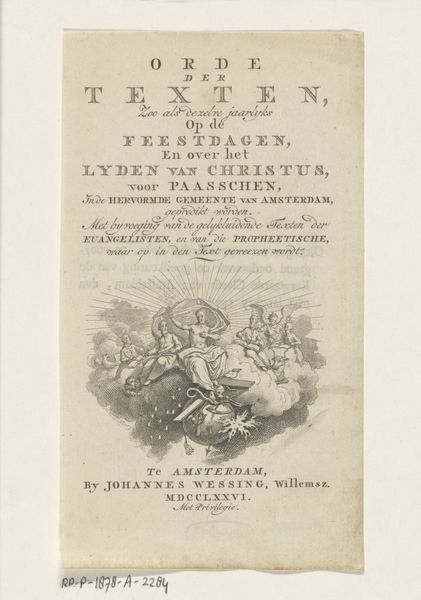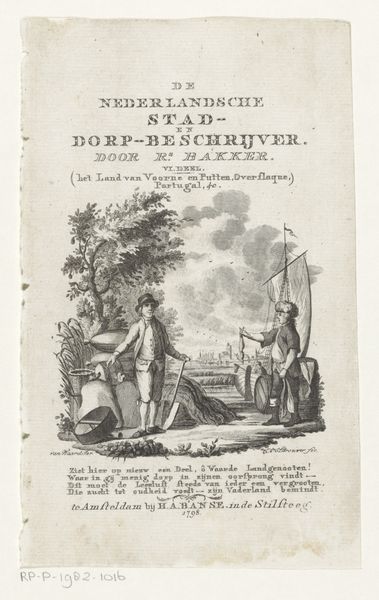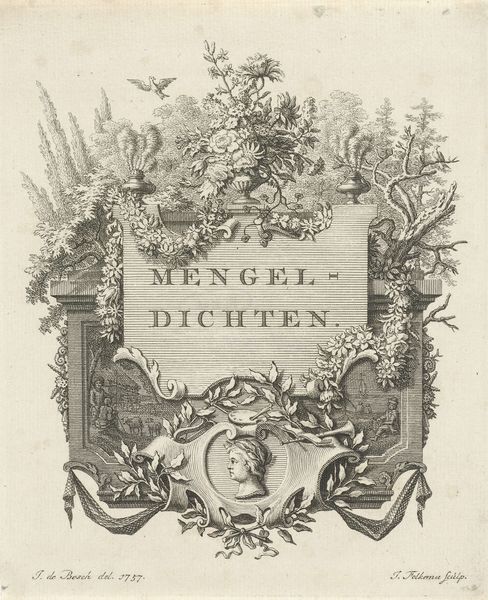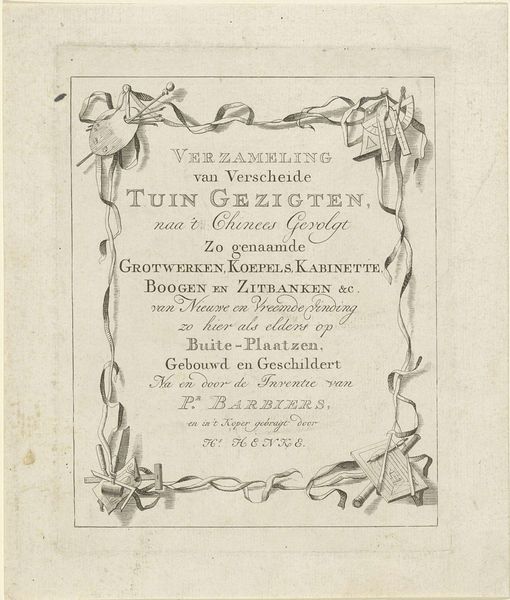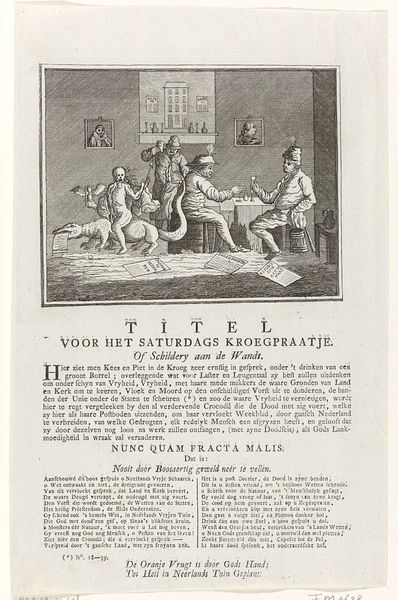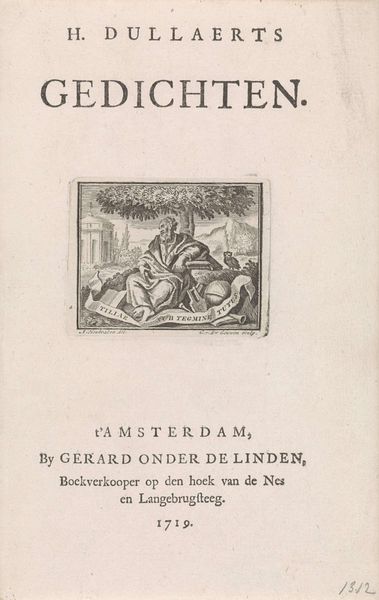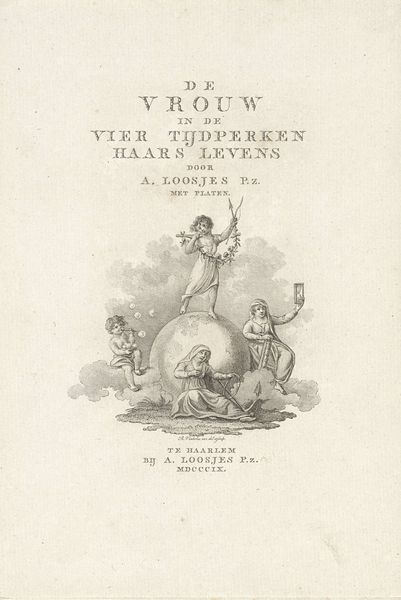
Dimensions: height 225 mm, width 135 mm
Copyright: Rijks Museum: Open Domain
Editor: Here we have the title page for Volume II of “De Post van den Neder-Rhijn,” from 1782, by Izaak Jansz. de Wit. It’s an engraving, so very precise, with these allegorical figures dominating the scene. It feels very… formal. How do you interpret this work within its historical moment? Curator: The formality is key, isn't it? Look at the composition; we see these figures rendered in a Neoclassical style, a deliberate choice. But why evoke this return to antiquity in 1782? It’s crucial to understand the socio-political context. The “Post” suggests dissemination of information, but who controls that narrative? Who is included, and perhaps more importantly, excluded, from the conversation? Editor: I see what you mean. The central figure with the staff and hat looks like she's in a position of authority, maybe guiding the news. Is she meant to represent something specific? Curator: Possibly an allegorical figure of truth or enlightenment. Notice the instruments and tools at her feet. These imply knowledge, mathematics and accuracy. Now, consider who *isn't* depicted: voices of dissent, perhaps. What message might the artist and publisher be trying to promote, and whose interests are being served? The book would have likely been read in male-dominated coffee houses. Editor: So, you’re saying we should read this image not just as a representation of news, but also as a carefully constructed statement about power and the control of information? A male version? Curator: Precisely. Think about the limited access to knowledge at the time, class divisions, and gender inequalities. It forces us to confront the uncomfortable question of how dominant narratives are formed and perpetuated, even today. Editor: That really shifts how I see it. It's not just a pretty engraving, but a snapshot of societal power dynamics, presented through carefully chosen symbols. Thanks, that gave me a lot to think about. Curator: Indeed, by critically analyzing the choices made within the artwork, we gain insight into the biases inherent in historical narratives. Examining what isn't seen it what we gain today.
Comments
No comments
Be the first to comment and join the conversation on the ultimate creative platform.
